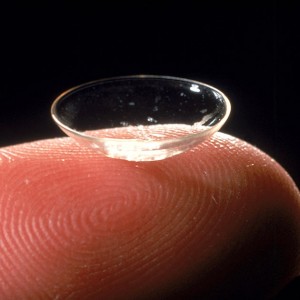 Optometrists as eye care practitioners are fortunate enough to be equipped with a range of skills in vision management. One of these skills is the ability to fit and prescribe contact lenses to meet patient needs.
Optometrists as eye care practitioners are fortunate enough to be equipped with a range of skills in vision management. One of these skills is the ability to fit and prescribe contact lenses to meet patient needs.
During the course of the pre- registration year, it is certainly wise to gain further confidence in this area in order to best serve the needs of the patient. The following are important aspects to consider in determining the route to a successful specification:
The patient
A large number spectacle wearers are suitable for contact lens wear. However, it is extremely important to consider each patient on an individual basis. Issues such as the prescription, binocular status and pathology should all be considered. Also the maturity and motivation of the patient are important. All essential eye measurements should be taken and recorded, including corneal curvature, tear assessment and external eye health.
Assessor says...
It is important to ensure you see a wide range of contact lens patients over the year, and from as near the start as is reasonable. Each year sees many pre-reg’s scrabbling around for those less easy to find patients, typically RGP wearers, at a time where an assessment is approaching. Start looking out for these patients from the start and make sure everyone in the practice knows to let you and your supervisor know of any bookings of interest
The Lens
Choosing the right lens has become somewhat easier in recent times, with manufacturers now providing a range of options for the practitioner.
The lens chosen shall be reflective of the needs and expectations of the patient after a discussion.
Does the patient require a soft lens or RGP, conventional or silicone hydrogel, toric or multifocal? Wearing modality, such as daily, two-weekly or monthly, also need consideration.
The pre-reg should think critically about what would be most appropriate.
Assessor says...
It is essential to become familiar with a range of lenses and care systems. Make sure you know their material composition and be able to suggest why one lens material might be more appropriate than another in the management of any single case. Importantly, if you work in a practice that uses own brand names, make sure you know the generic name when discussing with your assessor
The fit
With a willing patient in seat, lenses applied and settled, the practitioner should determine whether the lens is a suitable fit. At this point, it shall be important to measure: centration, push-up, vertical lens movement/movement on blink, horizontal lag, corneal coverage, comfort and vision in order to make a decision on suitability for trial.
The educating
It is important to fully educate the patient on do’s and don’ts of contact lens wear and care. The patient should understand the risk of contact lens-related infection, understand the signs and symptoms, and be very aware of what to do in such circumstances, both in and out of normal practice hours. The importance of hygiene and a care regime should also be emphasised. The practitioner should record the advice relayed to the patient.A teach should then be conducted or supervised with both the practitioner and patient comfortable and confident in the ability to successfully apply and remove the contact lenses. Wear times should also be discussed with the patient before issuing trials.
Assessor says...
Evidence of having undertaken an instruction of lens wear with a patient is a requirement for a competency at visit 1, very early on in the year. Even at this early stage, a good general knowledge of lens materials and care systems is recommended. It is also a good idea to be aware of the legal requirements for contact lens sale and supply by this stage (who can fit, adjust correction, supply to children and so on)
The trial
A trial period is usually offered to the patient. This is an excellent way for the patient to make an informed decision on whether contact lens correction meets their requirements and expectations in day-to-day life.
The patient should be encouraged to wear the lenses doing what they originally had envisaged using them for. This may mean playing sport or wearing them on a social occasion.
Aftercare
After having trialled the lenses, the patient shall present back in practice usually wearing the lenses supplied for a review. At this point, the practitioner is able to discuss how well the contact lenses met needs and expectations, as well as discussing the overall vision and comfort of the lenses, and whether any complications where encountered.
An aftercare should be completed in detail and lens fit and external eye health checked with staining. This will give an indication on how the lenses are affecting the eyes and whether there are any issues to be addressed.
Assessor says...
You will be watched undertaking a full aftercare of a soft lens patient both at visit 2 of stage 1 and again during your stage 2 assessment. Washing your hands and keeping all equipment sterile is a given. Recording data must be accurate and legible. Be able to assess the tear film accurately (try using a clock to see how accurately your counting of seconds is. And remember – lid eversion gets easier the more you practice
The success
Having determined a suitable lens, a completed specification can be issued and the patient placed on a regular review period with advice.
